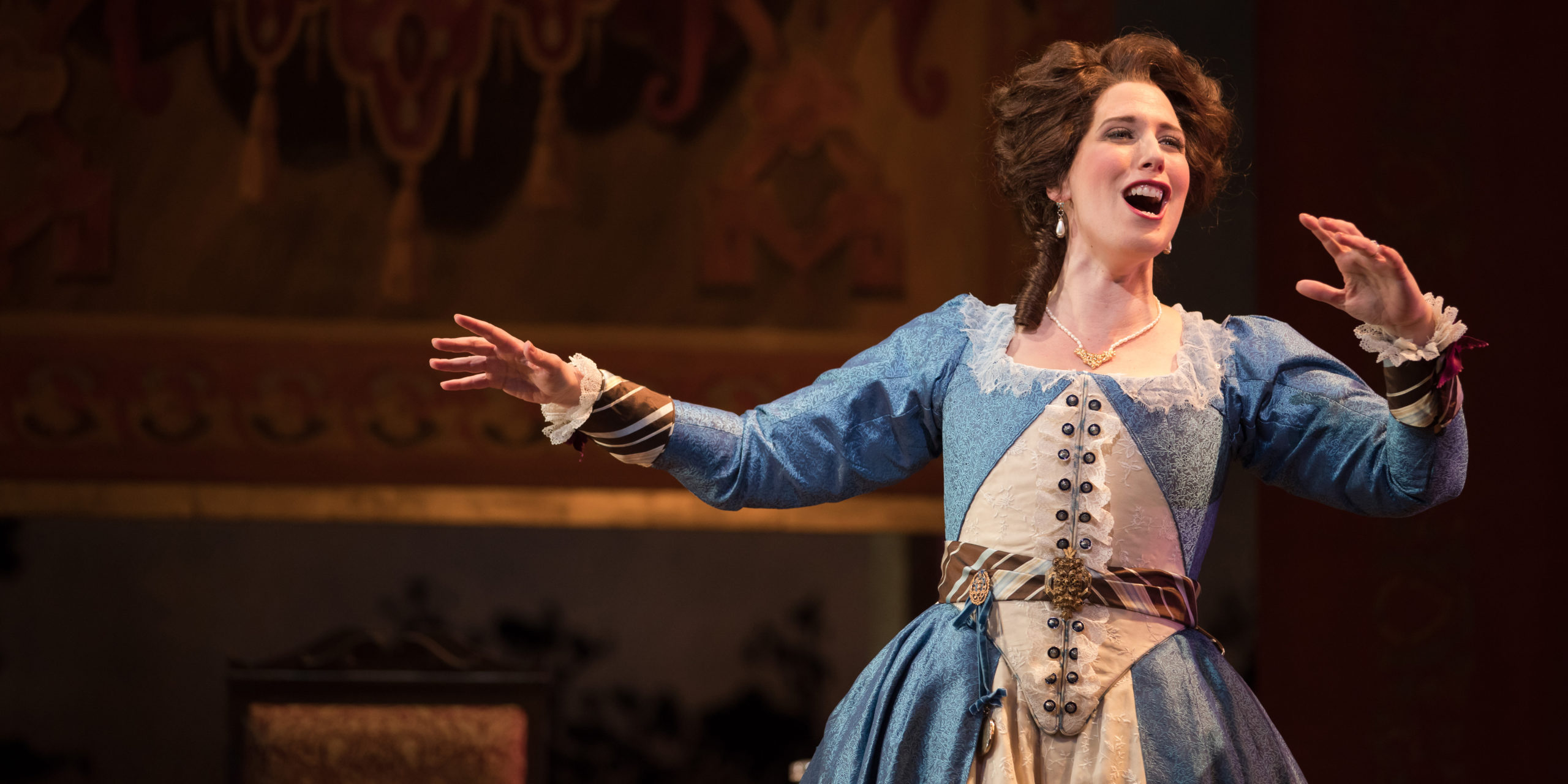Opera Explained: What Is an Aria?

Photo: Opera Colorado/Matthew Staver
By: Suzanne Whitney
Opera can be an intimidating genre of music. The performances are long, it is often sung in a foreign language, and there are so many different terms to learn and remember! Well, we are here to clear things up and make this fabulous artform a little more approachable. Today, we are tackling the term “aria.” This is a word you may have heard a million times, but not really known what it means.
Definition Please
Can you use “aria” in a sentence?
“Cherubino’s aria is just so cute! I love the character work in it.”
“Wow, what a tricky aria! The soprano is very talented.”
Ok, so it probably has something to do with performance right? Right. “Aria” comes from the Italian word for air. At its simplest level, an aria is a solo piece sung in an opera or another large-scale vocal work, like an oratorio. There are many different musical pieces within an opera and sometimes those are ensemble pieces, differing from arias as there can be two, three, or even dozens of people singing.
What Is An Aria’s Purpose?

Photo: Opera Colorado/Matthew Staver
Arias are an opportunity to showcase one solo voice and to get to know what is going on in the mind of the character in the moment. Usually, when an aria starts the action of the plot stops. This is one of the great strengths of opera, there is time taken to let the audience into how the character feels and what they might do next. Arias have often been compared to soliloquies in Shakespearean plays. They can be while the character is alone wishing for their happy ending, it can be an opportunity for a character to show off in front of a crowd, or even a window into a character’s mind as they go mad.
Extra Credit
As with many terms in opera, there are lots of different types of arias and extra terms to specifically talk about those differences. Here are a few other terms connected to arias you might run into.
Aria buffa – A funny aria.
Arietta – A short and simple aria.
Cabaletta – The second part of a two-part aria popular in the Bel Canto era of opera. It is usually set to a fast tempo and has lots of rhythmic interest.
Cavatina – The first part of a two-part aria popular in the Bel Canto era of opera. It is usually set to a slow tempo and is very lyrical.
There are many other types of aria and much more nuance to dig into surrounding what an aria is and its history, but we hope this gives you the context you need to learn more! And, we hope you enjoy all the examples of arias from our Opera Colorado Archives!
Do you have a favorite aria? What era of arias do you want to learn more about? Are there other opera terms you need help deciphering?



Thanks. More, please.
The famous phase, “It isn’t over until the fat lady sings..” Does this refer to the aria? Note: I know many sopranos are lovely and willowy.
in a recent movie I heard an aria being sung. I was immediately entranced. I’ve never listened to an aria before. im fully interested to learn more.